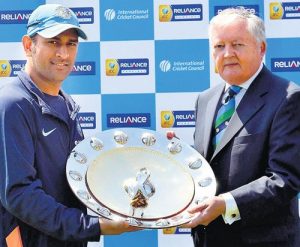One-Day International or limited-overs cricket is the short version of cricket, devised in the late 20th century to make the game easier for new fans to follow. It respects the general cricket rules for the most part but has some particular characteristics – mostly the number of overs, which are restricted to reduce the playing time. Here we briefly explain how One-Day International cricket is played.
The ODI Rules
 As cricket generally is, the ODI is played between two teams, each with eleven players. Obviously, the particularity of ODI is that it is necessary for both sides to have ICC granted ODI status. All the full ICC member country national teams have permanent ODI status, and the ICC has given temporary and special statuses to several teams for smaller teams to be able to play ODI games in some occasions.
As cricket generally is, the ODI is played between two teams, each with eleven players. Obviously, the particularity of ODI is that it is necessary for both sides to have ICC granted ODI status. All the full ICC member country national teams have permanent ODI status, and the ICC has given temporary and special statuses to several teams for smaller teams to be able to play ODI games in some occasions.
Both teams play one inning, that is, both teams play once to bat, and once to field. The captains decide which team goes first by throwing a coin. The team that is batting is the one to score points, and the team playing field tries to prevent the other team from scoring.
The first team batting establishes the target score – that is, the score the second team to bat will have to beat to win the match. One inning lasts until all the batting players are out, or the batting team runs out of overs.
The particularity of ODI is that the overs are restricted. Each bowler in the batting side is allocated a maximum of 10 overs each with 50 overs per team. The number of overs can be lower, but not any higher. This makes it essential for the teams to have at least five competent bowlers.
After both teams have played one inning batting, the final score establishes the winner. The game can result in a tie. There are no penalty rounds or similar mechanisms in place in ODI.